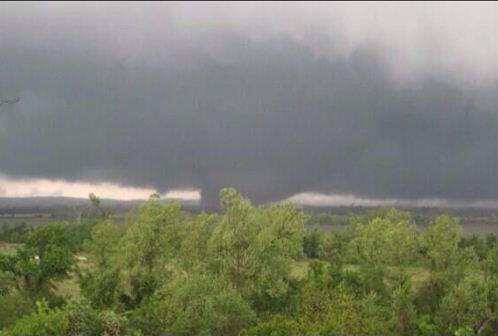On March 29, 2013, ExxonMobil‘s Pegasus tar sands pipeline ruptured in Mayflower, Arkansas, sending hundreds of thousands of gallons of diluted bitumen (“dilbit”) pouring down the town’s streets.
Now, just over a year after the massive spill, devastation has come to Mayflower and neighboring towns again, this time in the form of a lethal tornado. On the evening of April 27, the twister destroyed huge pockets of the town of just over 2,300 citizens in a wholesale manner, with 14 confirmed dead and likely many more still not counted.
“Sadly, we don’t expect it to stay at 14,” tweeted Arkansas Governor Mike Beebe. At least 10 died in Faulkner County alone, which houses Mayflower, according to the Arkansas Department of Emergency Management.
The National Weather Service in Little Rock has given the tornado that hit Mayflower an EF-3 rating on a preliminary basis. EF3 (the highest rating is an EF5) equates to 136–165 mile per hour winds and KATV weatherman Todd Yakoubian tweeted that National Weather Service will have its final rating in by April 30.
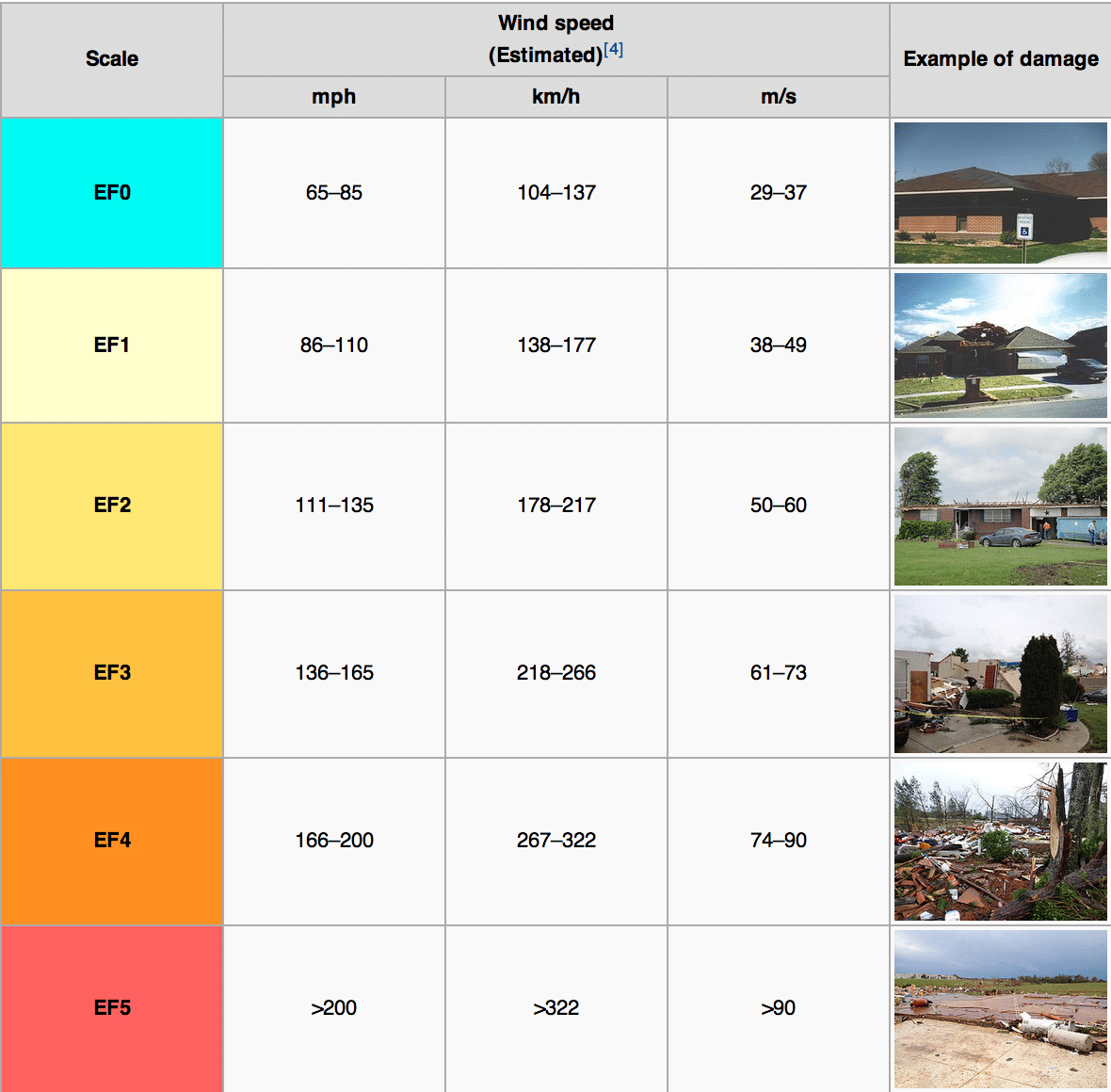
Table Credit: Wikimedia Commons
On the whole, Arkansas Geographic Information Office has reported that 3,200 addresses in Faulkner County have had various levels of impact.
Fate of Pegasus Pipeline Spill Neighborhoods
According to Mayflower resident Genieve Long, the iconic Mayflower Pegasus pipeline spill cul-de-sac where oil flowed through residents’ backyards and into the streets, was spared.
But the RVs located by the cove connected to Lake Conway — where tar sands oil spilled in the aftermath of the ExxonMobil pipeline rupture and became a key part of an ongoing class action lawsuit — were not so lucky.
Just before she was forced to shower at a truck stop because there is currently no water or electricity in Mayflower, Long told DeSmogBlog “the RVs located along the cove were all taken out.”
A picture tracked down on Twitter by DeSmogBlog testifies to this damage.
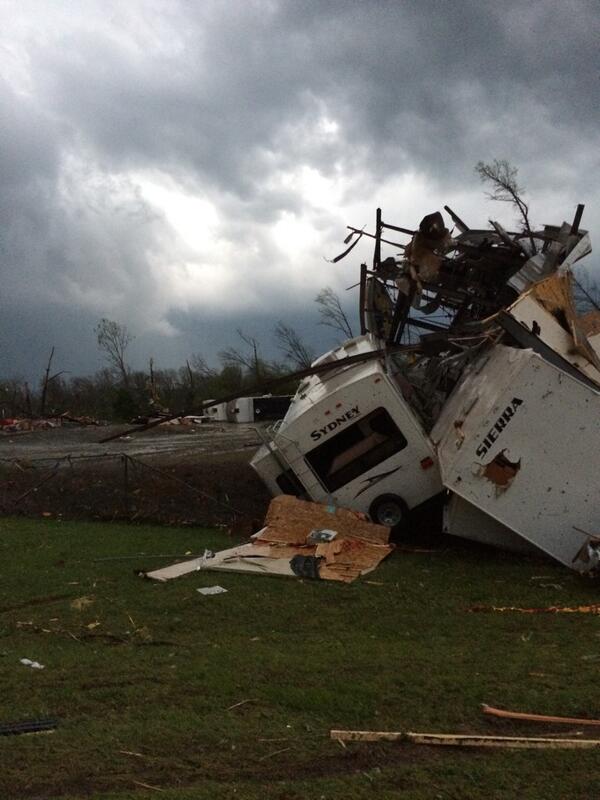
Photo Credit: Richie Graham | Twitter
Oil and Gas Infrastructure Damage
Soon after the tornado touched ground, gas utilities giant CenterPoint Energy reported gas leaks out of its infrastructure in the area.
“Our company technicians worked primarily in Mayflower and Vilonia to secure nearly 100 natural gas leaks caused primarily by uprooted trees,” Greg Strickland, CenterPoint’s manager in the area said in a press release. “Today we will continue to perform leak surveys in the area to ensure the safety of our customers and our distribution system.”
Another gas utilities giant, Entergy, also reported major infrastructure damage in the area.
“[The] Mayflower 500kv high voltage yard…no longer [has] any switches or breakers left after tornado’s path of destruction,” Entergy wrote on Facebook.
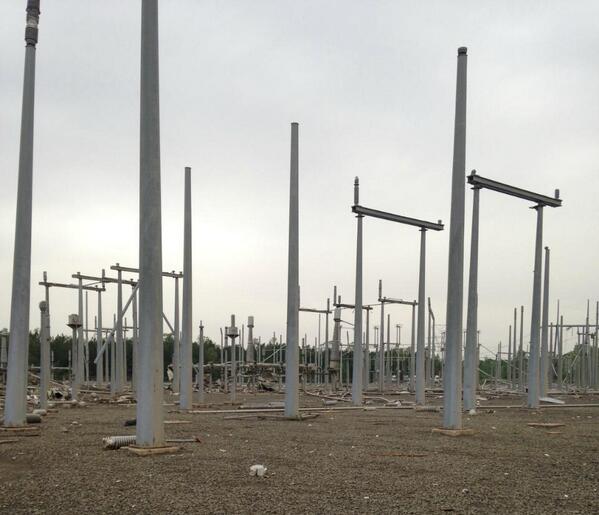
Photo Credit: Entergy | Facebook
Entergy also explained that “There are lines and poles scattered everywhere in the path of [the] tornado.”
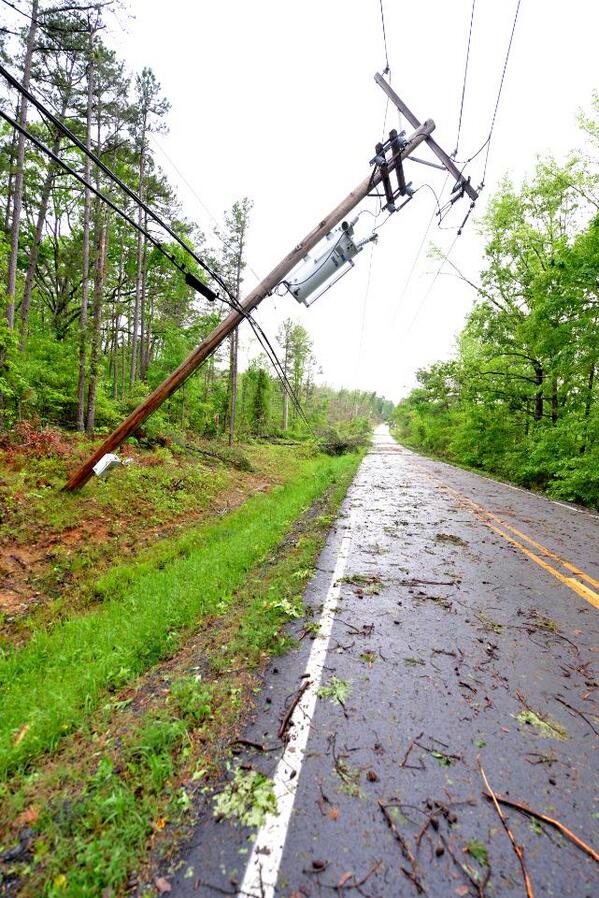
Photo Credit: Entergy | Facebook
Climate Change Connection? Sort Of
How about climate change? Was this gargantuan tornado tied to climate change in any way, shape or form?
The answer: sort of, and it depends on which scientist you ask.
Former DeSmogBlog contributor Chris Mooney broke down the scientific inquiry on the issue in a piece published on Mother Jones. Mooney concluded that it “would be very premature to say that scientists know precisely what will happen to tornadoes as global warming progresses.”
Yet, that does not necessarily mean the converse is true. That is, Mooney says it is false to say there is no tie between climate change and increasingly severe tornado magnitudes.
“[Scientists] have come up with some interesting new results, which point to potentially alarming changes,” wrote Mooney. “More generally, the upshot of this research is that tornadoes must change as a result of climate change, because the environments in which they form are changing.”
Another article published by Climate Nexus comes to nearly the same conclusion. But research by Kevin Trenberth of the National Center for Atmospheric Research in Boulder, Colorado indicates there is very likely a tie between climate change and the severity of tornados.
Trenberth told Scientific American:
The main climate change connection is via the basic instability of the low-level air that creates the convection and thunderstorms in the first place. Warmer and moister conditions are the key for unstable air. The oceans are warmer because of climate change.
The climate change effect is probably only a 5 to 10 percent effect in terms of the instability and subsequent rainfall, but it translates into up to a 33 percent effect in terms of damage. (It is highly nonlinear, for 10 percent it is 1.1 to the power of three = 1.33.) So there is a chain of events, and climate change mainly affects the first link: the basic buoyancy of the air is increased.
For now, though, debates over whether climate change caused a severe tornado in Arkansas are merely academic for those directly impacted on the ground.
“It’s hard to describe what families are going through,” April Lane, board member of the Faulkner County Citizens Advisory Group, told DeSmogBlog.
“Everyone is feeling the loss of those who lost loved ones and it’s just incomprehensible and hard to wrap your mind around. So for now, all of us are wrapping our arms around each other right now and trying to do whatever we can to help.”
Pictures Speak
DeSmogBlog has compiled the most harrowing photos tracked down via Twitter from citizens and reporters in the area. Sometimes you just have to let the pictures do the talking.
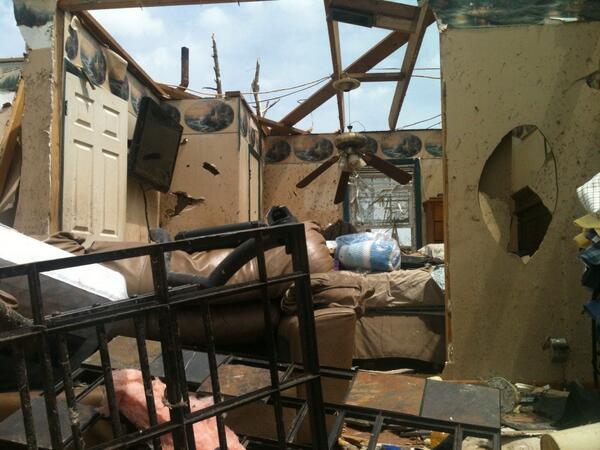
Photo Credit: Scott Carroll | Twitter
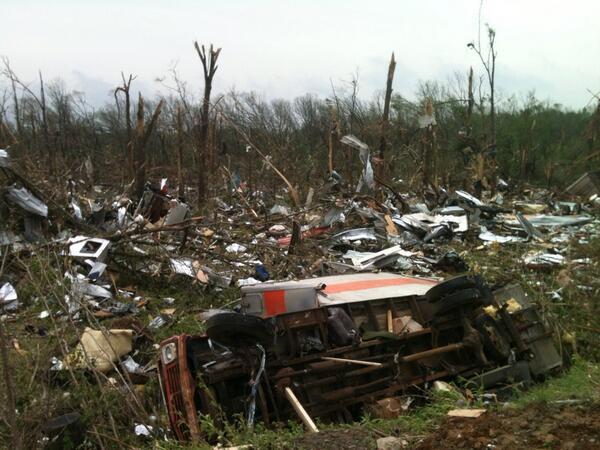
Photo Credit: Scott Carroll | Twitter
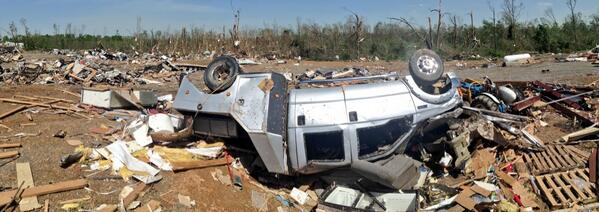
Photo Credit: Phil Buck | Twitter
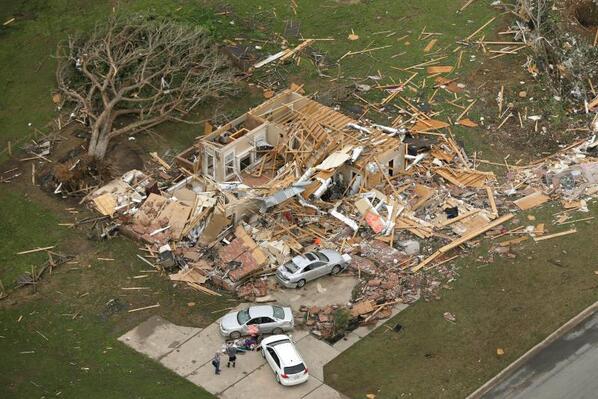
Photo Credit: Tamer Yazar | Twitter
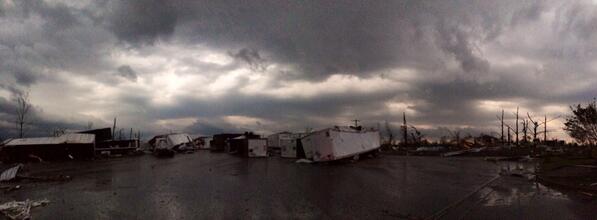
Photo Credit: @WhistlePig11 | Twitter
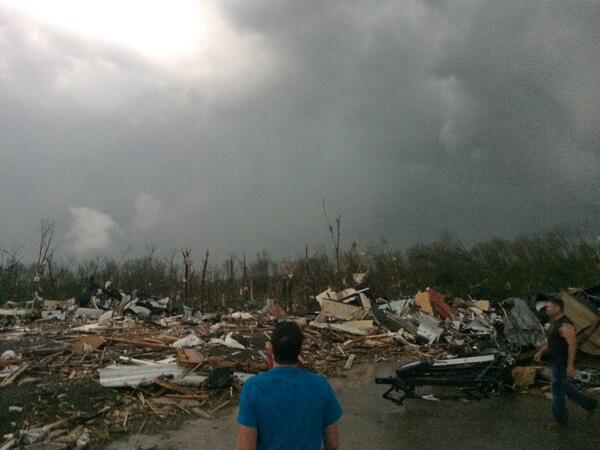
Photo Credit: James Bryant | Twitter
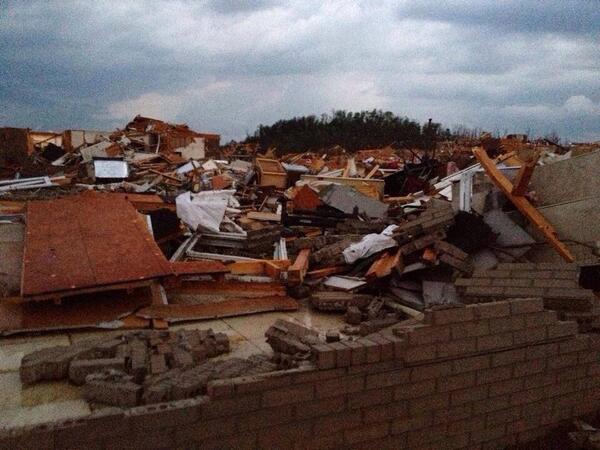
Photo Credit: Ryan Liggett | Twitter
Photo Credit: Eric Elwell | Twitter
Subscribe to our newsletter
Stay up to date with DeSmog news and alerts


